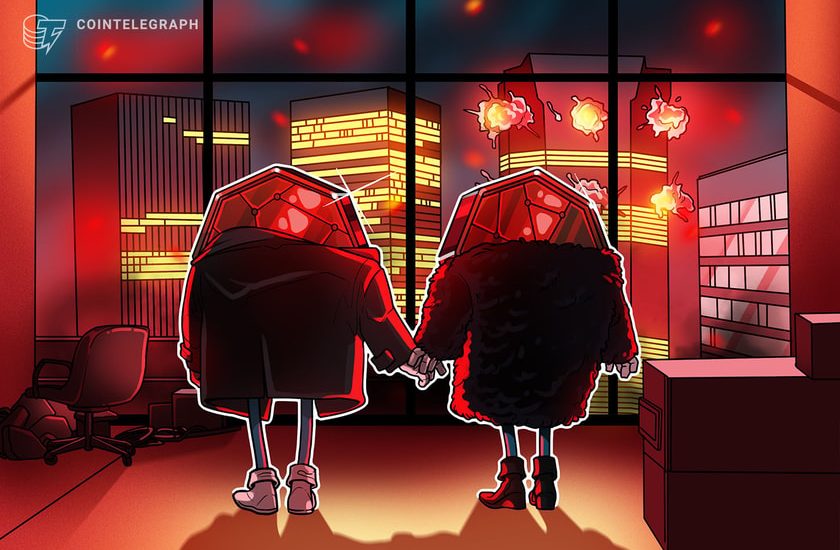- August 15, 2023
- Posted by: admin
- Category: BitCoin, Blockchain, Cryptocurrency, Investments


GameFi developers have been focused on raking in money — and they’ve forgotten that they need to make games fun in order to win over players.
Blockchain games began as a means to effectively test technology’s true potential. However, making sure they reach that potential remains a challenge. While Illuvium was one of the most highly anticipated crypto game releases in history, the price of its ILV token has fallen significantly since 2021 — to the tune of 97%.
The project’s developers have not released anything substantial for quite some time. The immersive gameplay and impressive graphics are not enough to stop the game’s token from plummeting. The same can be said of most GameFi tokens.
Blockchain games have been largely underwhelming to date because they do not focus enough on ensuring a quality user experience. Ultimately, the task of creating these games is underestimated. When GameFi emerged, it had a lot of potential, but it has been largely underwhelming. It’s not an easy task to build quality AAA games (those released by top publishers). It is a complex, expensive process with intense competition.
Related: 2023 will see the death of play-to-earn gaming
Developers and publishers are now also engaging in many tired tropes and poor practices. Many games have been rushed or poorly designed. Some have featured no meaningful entertainment value, and the earning potential is the only reason people play them. This is usually due to a lack of budget or rushing out unfinished games. Additionally, some companies have released games that do not match the gameplay in the trailer, causing players to lose trust in the industry.
With all this in mind, it’s fair to say that many of these games may not prioritize their players. Audiences wait months for the arrival of new games — only to find that they are low quality, poorly designed and lacking in entertainment.
Illuvium: Overworld is still beautiful on the low settings of my laptop. @illuviumio #Illuvium #web3game pic.twitter.com/6AGu5tcC2W
— Gringo HodL // (@GringoHodl) August 15, 2023
Illuvium raised funds by issuing its ILV token and selling land nonfungible tokens (NFTs) for $72 million before the game’s launch. Despite this, the public beta launch is being delayed. This highlights one major disadvantage of AAA games: Focusing on earning can potentially take the enjoyment out of the game. The very same issues occurring with Illuvium are happening with other AAA blockchain game projects.
Pixelmon stands out when discussing AAA blockchain game projects that did not meet the mark. The play-to-earn game inspired by Minecraft, Fortnite and Pokemon sold a collection of 10,000 NFTs in 2022, earning approximately $70 million simply from hype — but then the game’s launch failed all expectations from players. Some characters were standard Unity models, and one user got an invisible character. This was not the sort of project that was worth $70 million.

Developers could prioritize unsustainable economic models over implementing features to create a more exciting experience for players. This has been a trend in the GameFi market, neglecting engaging gameplay.
In Illuvium’s tokenomics, 45% is set aside for the team and investors. Just 10% is assigned to game rewards, a minuscule figure compared with the investors’ share. All of the token investors’ allocations will be available and can be sold before the game’s launch, meaning the Illuvium team and investors have the benefit of an early exit.
With these kinds of games, there is a massive risk of losing money. Users might have to spend long periods in the game before they receive any significant monetary return. It should also be noted that token prices fluctuate rapidly.
Related: GameFi developers could be facing big fines and hard time
With blockchain gaming, there is also a high cost of entry — greatly hindering the mainstream adoption of GameFi. There must be additional value added other than a monetary return that takes significant time to build up. The user experience needs to be rectified. This factor not only turns off players but also investors. The ultimate purpose of token issuance is to increase its value with the team, investors and players.
However, with Illuvium, there is a risk for retail investors and players, given that 45% of the tokens could face selling pressure before the game even launches. Token investors have an incentive to sell when the demand for ILV rises, but this is at odds with game players, who are hoping for a decent return on investment from playing the game.
So far, Illuvium is profiting from the buzz generated by tokens and NFTs — and retail players and investors bought the excitement — but it has not yet shown real value. The game’s “token first, make the allocations available, and game later” strategy creates a situation where investors and players have diverging interests. The game was primarily made for investors rather than gamers.
While it has some impressive designs and ideas, the game is still missing a lot of features, and there is significant room for improvement.
Investors represent too many of the game’s users, making its success a product more of marketing than the quality of the game. Illuvium’s current nature is akin to an initial coin offering project, hyping the creation of an AAA blockchain title that hasn’t been delivered. Even if a $100 million title is successfully produced, the question remains: Are there enough blockchain gamers to support it?
The opinions expressed are the author’s alone and do not necessarily reflect the views of Cointelegraph. This article is for general information purposes and is not intended to be and should not be taken as legal or investment advice.
